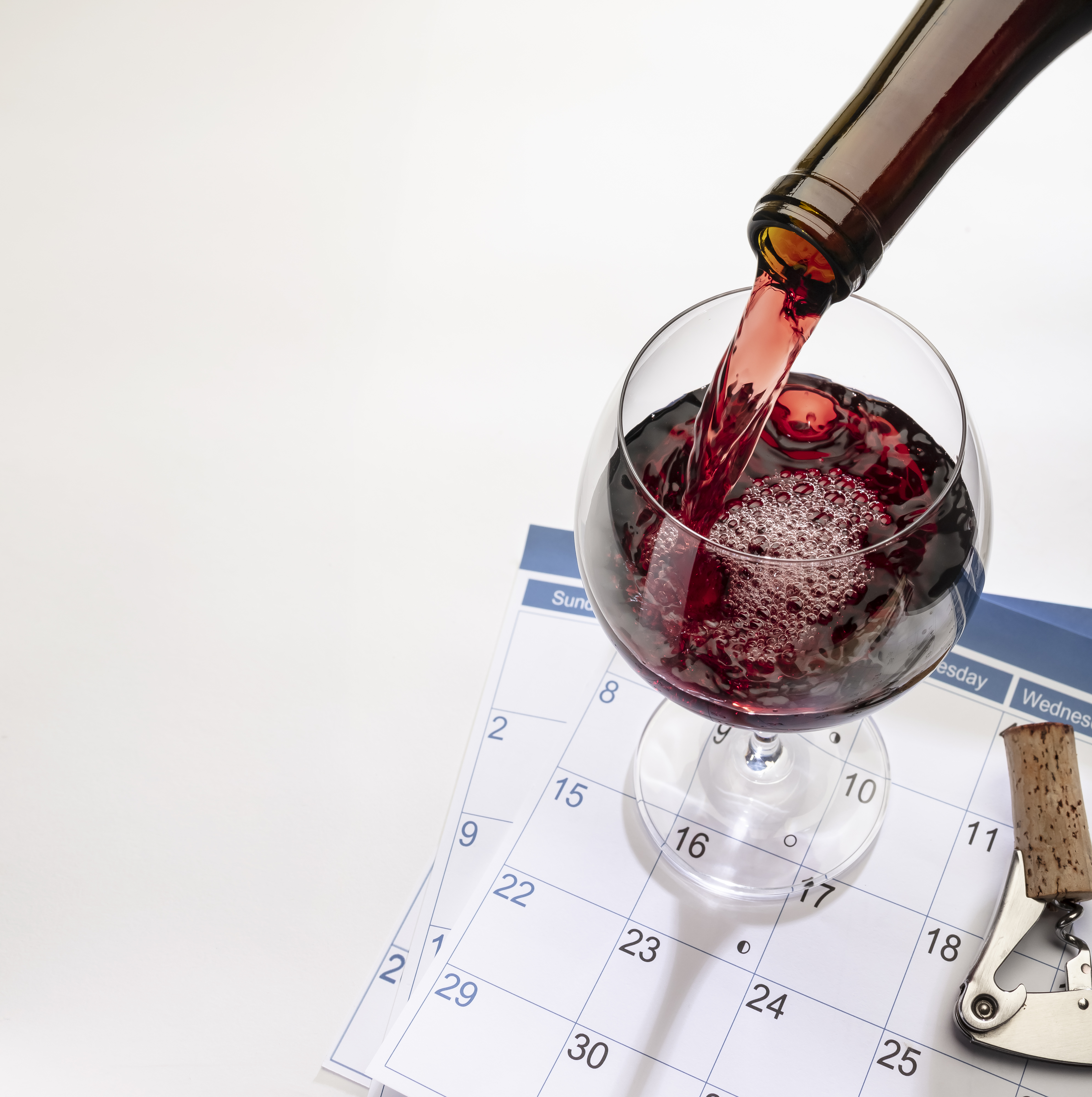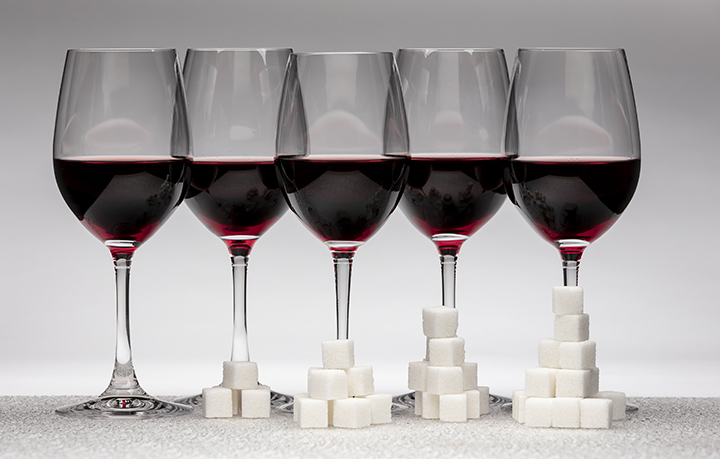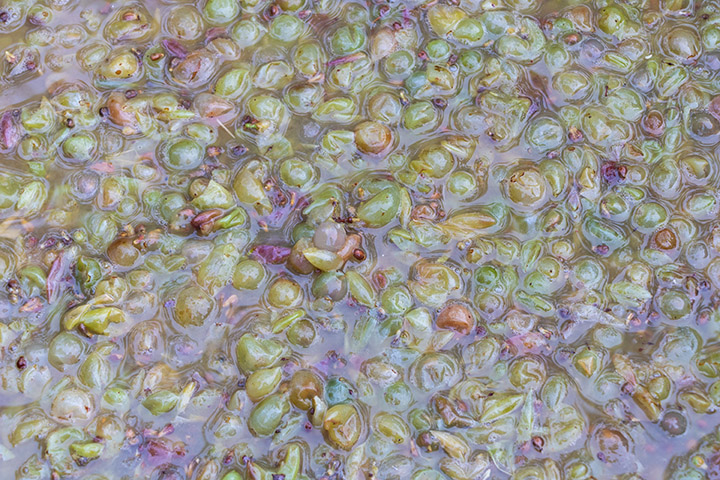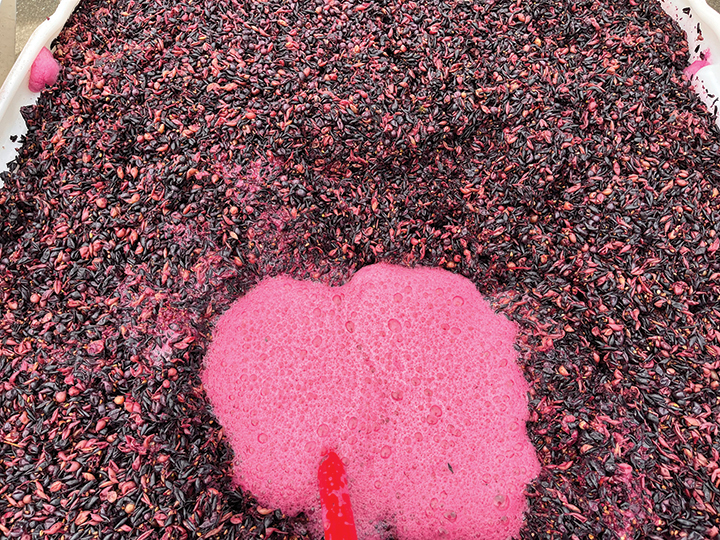Bringing Out the Fruit
Three pre-fermentation juice treatments
Winemakers have several pre-fermentation treatment options with the potential to increase or alter the flavors and aromatics in wine. The methods described here are not for novice winemakers and some will require specialized equipment. It is vital that you have a deep understanding of fermentation, the general chemistry of your grapes, and the limits of your cellar to achieve the desired results. When attempting these techniques it’s always good to have a specific goal in mind to know when to stop any of these processes and begin fermentation.
(Note: CO2 is dangerous. To avoid injury or death, please use caution, proper safety equipment, and only try this with proper ventilation. Do not try this without prior experience of using gases and CO2.)
Cold Soak
Cold soaking is a technique used in red wine production. It is simply letting the red grapes extract in juice without the presence of fermentation (alcohol) in a cold environment. Though the primary argument for cold soaking is an increase of color, treatment of the must in this way allows a gentle extraction of compounds that contribute to both flavor and aroma. The first solvents available to extract anthocyanins are sugars and water. Cold soaking allows this extraction to occur for an extended period. Once fermentation starts, the solvent matrix of the wine will change to alcohol and water as the sugar fraction decreases. As alcohol increases more harsh and astringent compounds will be extracted.

Prior to alcoholic fermentation, fresh grape winemakers have the option to employ several rather unique techniques. Temperature control is a necessary aspect of them all. Photo by Daniel Pambianchi
When planning a cold soak, grapes can be crushed, whole, or even whole clusters. The key to a successful cold soak is deceptively simple — keep the must cold. The tank is mixed with pumpovers or punchdowns 1 to 3 times a day (being cautious of adding excess oxygen to the must). If the temperature of the must is too warm, it will give the indigenous yeast and bacteria the opportunity to take hold. Sulfite and dry ice (or CO2) gas can be used to help exclude oxygen from the must and protect against fermentation while slowing the growth of aerobic bacteria.
A beneficial low temperature-tolerant non-Saccharomyces yeast (Metschnikowia species) can help protect the must by “outcompeting” many types of yeast and bacteria. It will also protect the must as the temperature increases to allow the onset of primary fermentation. Enzymes can be added to help extraction and tannin can be added to help stabilize color during the cold soak. The primary inhibitory factor of fermentation and unwanted microbe growth in a cold soak is the temperature itself. By keeping the must below 45 °F (7 °C) most unwanted microbe growth will be inhibited. Most cold soaks last between five days and two weeks. Cold soaking should be stopped once you reach your desired goal or if any fermentation activity is visible during the process.
The potential increase in color extraction and boost in aromatic and flavor compounds comes with some risk. Any process that uses cold temperatures to change the make-up of a wine/juice matrix has the potential of changes in pH. If the pH of the must is below 3.65 the final pH of the pre-fermentation juice will probably decrease. If the starting must pH is over 3.65 you will most likely see an increase of pH in the final must. This is due to the dissociation (pKa) of tartaric acid. Other factors like buffering capacity, choice of additions, and the starting quantity of tartaric acid will impact this as well.
Cold soaking usually causes tartrates to fall out of solution, so be prepared to have tartrate precipitate in the tank. Shifts in pH can be more extreme if malolactic fermentation is included in the course of fermentation protocols. pH shifts are easy to correct with the addition of tartaric acid or potassium carbonate. These additions should be carried out as early as possible to allow integration into the juice or wine (pre-fermentation, if possible). Additions later in the process will have more impact in the sensory aspects of the final wine and sometimes can be less effective.
A variation of cold soaking at a slightly warmer temperature (55–60 °F/13–16 °C) can accomplish some of the same things as a traditional cold soak but will also allow the indigenous microbes to start working. Often it is used as an opportunity to allow the tank to mix and homogenize. This can be very useful if your fruit has any dehydration, as the dry berries will soak up from the juice over time. Mixing while cold soaking can help give a more accurate read on the basic chemistry of the tank. Because the temperature is warmer than a traditional cold soak, there is a larger risk of microbe growth. SO2 dosing can help lower this risk, but caution must be observed. This type of cold soak should only last a few days before primary fermentation is initiated.
Carbonic Maceration
Carbonic maceration is a technique primarily used in red varietals that can increase flavors and aroma characteristics in a fruity direction. Beaujolais nouveau provides one of the best-known examples of this style of wine. The wines will often show an increase in red fruit character, and can also display fig, banana, grape, musk, and pear. Historically in Beaujolais, this technique has been applied to the Gamay grape variety. Outside of France this technique has also been used on Tempranillo, Pinot Noir, Zinfandel, and several other grapes.
Like cold soaking, carbonic maceration utilizes solvents to extract characteristics from the grapes. In this case carbon dioxide (CO2) is used to slowly extract the pigment into the pulp of the berries. Oxygen deprivation from the berries causes alternative enzyme pathways to activate, which is the primary source of the unique characteristics of this process. The berries will swell and become saturated with about 50% CO2 by volume. Malate dehydrogenase will break down the malic acid in the berries to alcohol, succinic acid, and amino-butyric acid. Unlike malolactic fermentation, no lactic acid is produced. This enzymic action will lower the titratable acidity, raise the pH of the must, and can create about 2% alcohol. Carbonic maceration will help to increase the fruity characteristics of a wine but may detract from the specific varietal character. It can be applied to a portion of the grapes that make up a batch to increase the complexity of the final wine.
In the traditional method of carbonic maceration used in Beaujolais, whole clusters or uncrushed grapes (whole berries) are loaded into 5,000-gallon (190-hL) tanks (or larger). Air is replaced with CO2 before or after loading, and the grapes are held in this environment for the course of maceration. Some of the grapes get crushed under the weight of the must. This juice is allowed to ferment and provides more CO2 to help sustain the 3 to 10 (or more) day process. Because the majority of color is extracted in the maceration, the juice is often pressed off and treated like a white wine or rosé fermentation. In the Beaujolais method, the tank can increase in temperature up to 95 °F (35 °C). The enzymatic changes that make this distinctive style peak between 85–95 °F (30–35 °C).
The primary inhibitory factor of fermentation and unwanted microbe growth in a cold soak is the temperature itself.
Techniques of carbonic maceration have been applied in many other parts of the world outside of France. In Germany, it has been used for skin contact in Riesling. In Australia, it has been used on Pinot Noir and Syrah to help accentuate the fruit. Variations of the method can be found in Spain, the U.S., and many other countries. In one Australian method, grapes are carefully loaded into bins lined with food-grade plastic bag-style liners. The goal is to have little to no juice escape the berries. A crush-proof container filled with dry ice is placed in the bin liner prior to loading.
This will slowly displace the oxygen in the bag, which is either fitted with an airlock to allow the escape of oxygen and extra CO2 or tied loosely and sealed after the exit of all air and CO2. The bins are then stored in a heated area of the winery and held at 85–95 °F (30–35 °C). In this case, it is vital that the fruit is sound and there is no juice to allow fermentation to start. The bins are held like this for 5 to 8 days, much like the French method. The Australian Wine Research Institute has found that the impact of carbonic maceration can be achieved at lower temperatures, but the effect will be more subtle and short term. The results very based on ripeness and variety. If stems are included in the maceration, they will impact the flavor and character. For this reason, the ripeness of the stems needs to be considered.
Carbonic maceration should only be applied to sound fruit. Risk of microbial contamination increases if proper temperature is not achieved. Many wine microbes are hindered or will not grow in temperatures in excess of 90 °F (32 °C). The critical time with this process is the transition between maceration temperature and fermentation temperature. If juice is rendered during the process, it needs to be carefully checked for increased VA (volatile acidity). This juice may be fermented separately and evaluated to make sure it does not contaminate the balance of the lot.
Stabulation
Stabulation is a technique used to bring out aromatics and flavors in white and rosé wines. The process was probably developed in Germany with Riesling grapes, but it has been honed and modernized by rosé winemakers in Provence, France. It has commonalities with both cold soaking and carbonic maceration. When juice is recovered from lees, it often has heightened aromatics. Some of these are lost when the juice is rapidly clarified and removed from the solids. Stabulation macerates the lees into the juice prior to fermentation, extracting these valuable compounds. The best results will be achieved by using press juice from healthy, sound grapes. Successful stabulation will increase levels of esters, thiols, and improve mouthfeel of the wine.
In the process, press juice is brought into a settling tank and blanketed with CO2. The juice is held cold (32–36 °F/0–2 °C) for two or more weeks. To keep the fine lees in contact with the juice, the tank needs to be mixed two times per day. The total volume of the tank must be able to accommodate mixing without loss or splashing over. Because cold juice is more prone to oxidation, the tank must be agitated anaerobically. A preferred method of mixing is “bubbling” CO2 through the bottom or racking valve of the tank with enough force to appear like it is rapidly boiling on the surface (set the regulator to 15 to 20 psi).
This bubbling should last for 2 to 3 minutes, and the CO2 used in the process has the additional benefit of aiding with extraction. Alternatively, a pump can be used to mix the tank, which must be followed with a CO2 sparge to prevent oxidation. To ensure a good mix if using a pump, move about 1⁄3 of the total volume of the tank per cycle. With bubbling, no additional CO2 sparging is needed. When the process is deemed complete, stop the mixing process for about two days to allow settling. During the two days, allow the temperature to rise to 46–50 °F (8–10 °C) to prevent oxidation during racking. Once the desired temperature is achieved, the wine can be racked off the sediment and fermentation can commence.
Many factors can enhance the impact of stabulation. Using a pressing enzyme can aid the extraction of skin components, allow for gentler extraction and pressing, and help control phenolics that are prone to oxidation. “Champagne”-style pressing cycles limit the amount of oxygen contact with the pressing berries. It consists of pressing, holding, and increasing pressure to the next interval. Once the cycle starts, the pressure will not dip back to 0 psi until the next cycle or the press finishes. A complete cycle is finished before the press cake is broken up. By use of continuous pressure, much of the oxygen exposure is eliminated. Use of dry ice in the press and juice pan will also eliminate some oxygen exposure. SO2 will help prevent microbial growth and will help remove oxygen. It can be added during crush, metered into the press, or applied into the settling tank.
The use of a non-Saccharomyces yeast can be employed in order to help protect the juice in the temperature transitions and can enhance characteristics of the wine. Make sure to use a low temperature-tolerant strain to handle the cold environment of stabulation. A small amount of fining added to the juice during tank mixing or after the start of fermentation can help remove phenolic compounds that are prone to oxidation and contribute to loss of aroma. Calcium bentonite, PVPP, or combinations of PVPP with casein or vegetable protein work great for this. Check to make sure the fining agent of choice has phenolic action.
Selection of a yeast that optimizes thiols or esters can bring out more of the aromatics that were extracted during stabulation. These yeasts can be fed with nutrients that are high in amino acid precursors for esters or thiols to bring out more of the desired aromatics. Yeast nutrients high in glutathione will help prevent oxidation of the flavors and aromatic compounds that have formed in the juice and wine. Glutathione has the added benefit of preventing browning in wine during aging. These added steps are not required, but they work in concert to help reinforce the impact of a stabulation. Because the juice is held cold during stabulation, expect pH shifts similar to those found in cold soaking.






